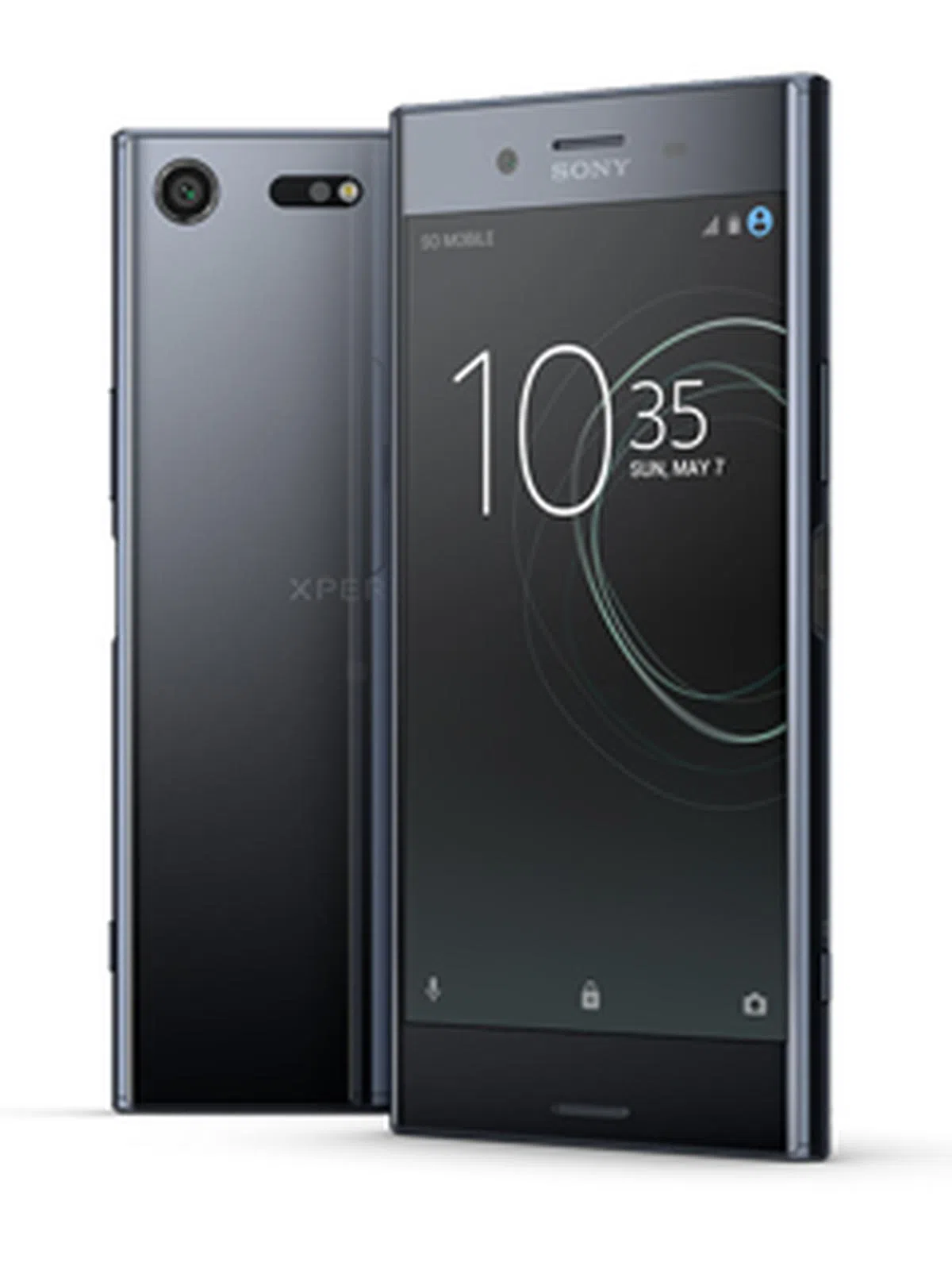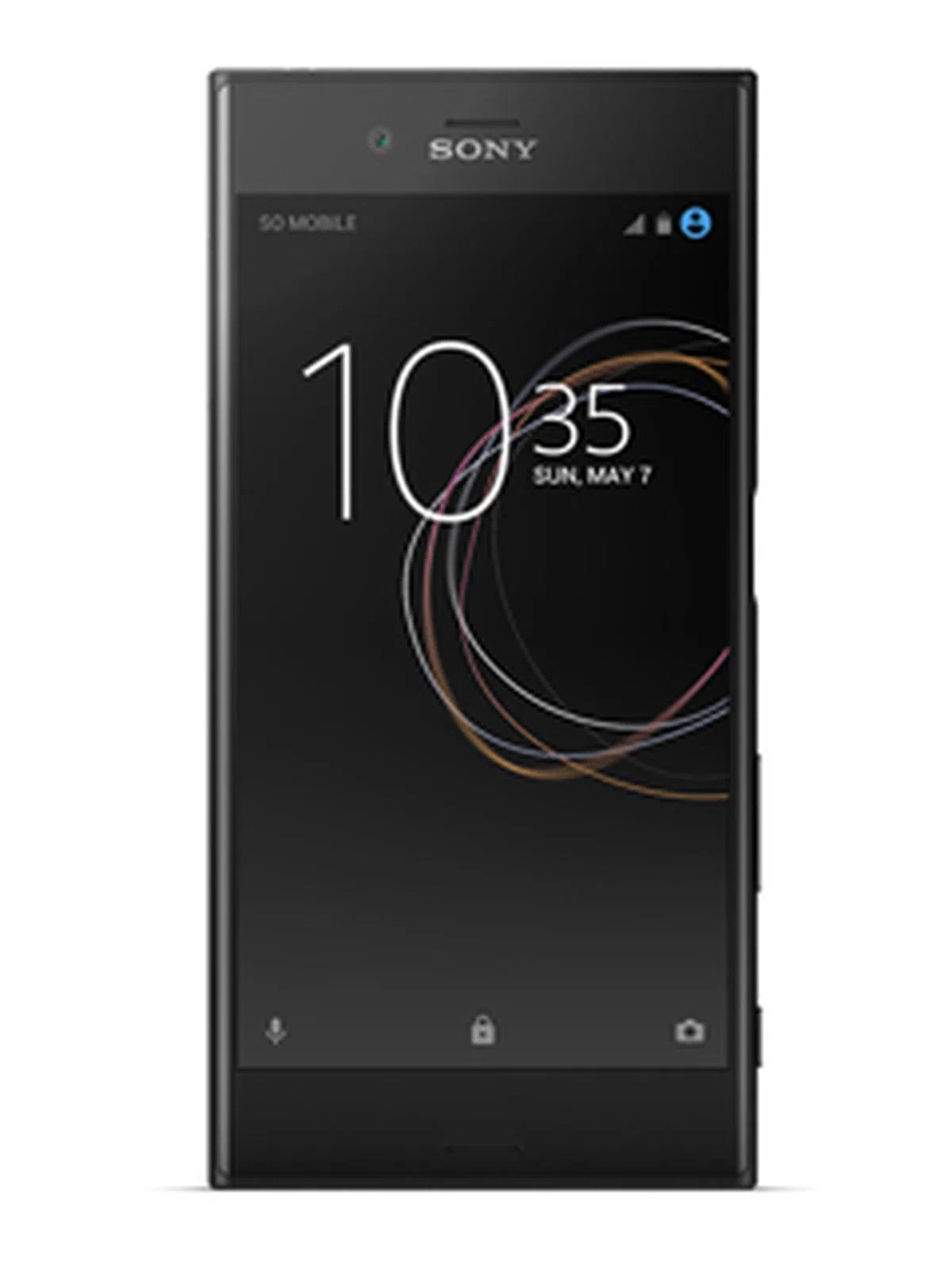Sony Xperia XZ Premium & XZs review: The first 4K HDR phone and its sidekick
While Sony’s latest Xperia XZ Premium (S$1,098) offers a 4K HDR display, its promises a little more with its new memory-stacked sensor for its rear camera. Will a tried-and-tested design work? Let’s find out!
By Liu Hongzuo -

Sony Xperia XZ Premium (in Luminous Chrome).
Overview
In the 4K HDR market, there are TVs, monitors, and now, a smartphone. While Sony’s latest Xperia XZ Premium (S$1,098) offers a 4K HDR 5.5-inch display, its promises a little more pizazz with its new memory-stacked sensor for its rear camera. The sensor brought about two other headlining features – Motion Eye for higher quality slow-motion clips, and Predictive Capture to nail those fast action shots. They’ve squeeze all these bells and whistles inside a familiar-looking body, but it’s backed by a powerful, current-gen processor: the Qualcomm Snapdragon 835 SoC. In fact, the Sony Xperia XZ Premium is the first smartphone that’s commercially available in Singapore with the Snapdragon 835 hardware since June 10th.

Sony Xperia XZs (in Ice Blue).
If you’re not chasing for the latest components, there’s the Sony Xperia XZs (S$898). It boasts the same Motion Eye and Predictive Capture features, but it’s in a slightly smaller form factor, a regular Full HD 5.2-inch display, and it uses a flagship processor from the yesteryear – the Qualcomm Snapdragon 820 platform. All in all, both phones made a solid showing when they were first announced, and both models are backed by their practical approach and a competitive asking price.
However, the competitive Android OS smartphone market leaves little chance for smartphones that don’t dare to innovate. Will playing things safe work for Sony? Let’s dive in to find out!
Design & Handling

By now, the current-generation Xperia devices hold no surprises for seasoned Android users who've been following Sony Mobile since the Xperia Z days. The current flagship Sony Xperia XZ Premium features the uniform design language that has persisted through the years. It uses a slate-like form factor called Loop Design (which is just a slight variation of the original Omnibalance design), with angular corners and a monolithic appearance.

On the side, you’ll find the physical power button which doubles as a fingerprint sensor on the right profile with the volume rocker placed just above it. Along the same side lies the dedicated camera shutter button, which also doubles as a physical shortcut to activate the phone’s rear camera. A dedicated camera button is now a rarity in smartphones, so if you appreciate photo-taking like you do with a point-and-shoot camera, Sony is still the only major phone maker who has continued with this. The front panel is a Corning Gorilla Glass 5 display, while its largely metallic aesthetic is prominent on the rear, just beneath the 2.5D curved glass. The plastic frame meets the front and back, demarcated by visible gaps that accentuate its no-nonsense look.

The XZs is similar in this regard as well, but the rear doesn’t use a glass finish.

While sticking to a tried-and-tested look is a safe choice, the general consensus seems like there's not much innovation from a design perspective when compared to devices the LG G6 or Samsung Galaxy S8+. The XZ Premium rivals managed to minimize the bezels on the front panel – something which Sony neglected to do. While it may look a tad dated without slim bezels, this design does provide a more reassured feel and there's less of a chance to accidentally activate something onscreen. It's a debatable tradeoff that some might appreciate and it's only apparent when you use the device for longer periods of time.

The Xperia XZ Premium offers excellent handling with its familiar button placement and 7.9mm-thin profile, while the XZs is really friendly for one-handed operation since it's a tad more compact than the XZ Premium. The positive handling experience is also a given since Sony didn’t change much of the phones’ physical attributes between each iteration. On a side note, you could even say that the XZs is sort of like the new "Compact" from Sony Mobile as it hasn't renewed that series since the Z5 days and we agree with their choice since such small screens are counterproductive in a mobile-centric world these days.
Display & Audio

The Sony Xperia XZ Premium uses a 5.5-inch, 4K (3,840 x 2,160 pixels resolution) HDR IPS display. According to Sony, they worked with Amazon to ensure that Amazon Prime‘s HDR videos are compatible with the device. Like its preceding 4K smartphone, the Z5 Premium, it also upscales any video and image stored within the Xperia XZ Premium to 4K resolution for your viewing pleasure. It is also compatible with some 2160p YouTube videos – it works without a hitch (subjected to your Internet connection speed) with a handful of movie trailers, test shots of the local skyline, and full-length music videos. As of writing, the only phone compatible with Netflix’s HDR is the LG G6, so Netflix-only users might have to wait or look elsewhere for compatibility.
Sony Xperia XZs uses a 5.2-inch Full HD (1,920 x 1,080 pixels resolution) IPS display. It doesn’t have the HDR support offered by its flagship brethren, and that’s where the main difference lies between these two devices (other than their respective chipset and battery capacities, if you care about hardware specifics).
The Xperia XZ Premium's screen has a warm color temperature. It’s vibrant to the eyes thanks to its strong handling of colors. There isn’t much to worry about beyond the mild red halos that can be found around the reddish-tinted parts of an image – likely a result of adopting a warmer display. It’s also capable of rendering minute detail really well.
The Xperia XZs, on the other hand, is largely similar, save for its weaker contrast handling.
The phones’ external speakers are front-facing, and they are found at the top and bottom of the bezel. It’s sufficiently loud, but otherwise functional. What makes them stand out is its support for Hi-Res audio (LPCM, FLAC, ALAC, DSD, DSEE HX, LDAC), which plays nicely if you have the appropriate audio files loaded on the phone.
UI & Features

Both the Xperia XZ Premium and XZs share the same features, which we will list below. By default, both phones use a Sony-styled Android 7.0 OS (Nougat), which has largely remained the same in design language and layout.
Motion Eye

Motion Eye, in essence, is a slow-motion segment inside your regular 720p video footage. Your 720p video recording will have a tiny little icon which you can tap on, and the next 0.182 of a second of your footage will be recorded at 960 fps. The phone will stretch those 0.182 seconds (Motion Eye segments) and play it across six seconds at 30 fps.
As noted in our video above, Motion Eye requires a good sense of timing to capture your preferred montage. You can also take multiple Motion Eye segments within a single recording, but there’s an (approximately) two-second wait in between each attempt. We got a first look at it through our hands-on coverage, and we also took the XZs out to do some Motion Eye field-testing as captured in the video above.
Predictive Capture
As the name implies, Predictive Capture helps the user’s photography experience by getting well-timed still shots. Technically, it shoots up to three full-resolution images from the moment before you hit your shutter button, and the fourth shot from your actual shutter click. It has a buffer of up to one second before the shutter, so it’s any shot taken from a second before to the actual snap – not after.
There’s one catch to Predictive Capture – the phone offers only two modes, Auto or Off, which means that you don’t get to force-enable Predictive Capture. Fortunately, it has not failed to show up where it’s required. Also, you’d sometimes get a choice of just two or three options, since the process is automatic and entirely decided by the phone.
The actual implementation of Predictive Capture works like a fail-safe for folks with slower reflexes. In practice, it’s definitely useful and helps you capture important action shots without wondering if you managed to catch it at the right time.
Both Motion Eye and Predictive Capture features are available on the Sony Xperia XZ Premium and Xperia XZs, so you’re not losing out on features, should you prefer to pick one device over the other.
Water-resistance
The Xperia XZ Premium has water resistance rated at IP65/68. We’ve previously explained why Sony uses two separate ratings to indicate its resistance to water in our Xperia XZ review. To reiterate, it’s extremely specific, and the phone is “Protected against heavy jet spray for at least 3 minutes” and “Protected against the effects of continued immersion in water at depths greater than 1 meter” – at least, according to Sony’s very own water resistance chart.
The Xperia XZs also come with the same resistance rating, too (IP65/68).
USB Type-C port with Gen 3.1 (Xperia XZ Premium only)

The Xperia XZ Premium’s USB Type-C charging port has USB 3.1 Gen 1 support – this means it has a transfer speed of up to 5Gbps, along with other USB 3.1 Gen 1 perks (it was formerly known as USB 3.0). The Xperia XZs, however, supports only USB 2.0, even though it uses a Type-C port.

The XZs uses a Type-C USB port as well, but it's not USB 3.1 (like most USB Type-C phones at the moment).
Here’s why the differences matter.
Performance Benchmarks
The Sony Xperia XZ Premium packs the latest Qualcomm Snapdragon 835 platform, making it one of the first Snapdragon 835 smartphones to be officially available in Singapore. In a nutshell, Snapdragon 835 is this year's flagship chipset built on 10nm process techology, with a maximum download speed of 1Gbps (subjected to carrier/telco limits). It also has support for LTE Cat 16 and Cat 13 (downlink and uplink, respectively), and LTE Dual SIM Dual Standby (our local Xperia XZ Premium sets will have dual SIM support in 4G/3G configuration).
The chipset, like the others before it, is a combination of various components. It has a maximum clock speed of 2.45GHz, running on eight CPU cores (64-bit Qualcomm Kyro 280). Graphics are handled by a Qualcomm Adreno 540 GPU, and it supports OpenGL ES 3.2, OpenCL 2.0 full, Vulkan, and DX12. Fast-charging up to Qualcomm Quick Charge 4.0, and Qualcomm WiPower wireless charging are supported, but the XZ Premium here only has QC 3.0 as that's the implementation used by Sony.
You can understand more about the Snapdragon 835 from these pieces we’ve put together (1, 2).
On the other hand, the Sony Xperia XZs uses a flagship chipset from the previous generation – Qualcomm Snapdragon 820. It needs no introduction since it was present in 2016 flagship devices.
Both Sony phones have 4GB RAM and microSD card support of up to 256GB. XZ Premium has 64GB internal storage, while XZs packs 32GB instead.
Our benchmarks will pit both phones against other 2017 flagship smartphones that have already surfaced in our market. It’s a mix of devices that come with Snapdragon 820, Snapdragon 835, and their rival processors of the same tier (Samsung Exynos, Huawei Kirin, etc.).
Sunspider Javascript
SunSpider JavaScript measures the browsing performance of a device when processing JavaScript. It not only takes into consideration the underlying hardware performance, but also assesses how optimized a particular platform is at delivering a high-speed web browsing experience.

For your reference, the Sony Xperia XZ Premium and Xperia XZs scored 68.385 and 37.568 respectively, for the JetStream benchmark – again, this is a new test where we're gathering test data, so we'll be a while more before we can transition. But as usual, the higher the score the better.
Quadrant
Quadrant is an Android benchmark that evaluates a device's CPU, memory, I/O and 3D graphics performances. The results turned in by the Sony Mobile phones seemed to trail a little behind expectations.

3DMark Sling Shot
3DMark Sling Shot is an advanced 3D graphics benchmark that tests the full range of OpenGL ES 3.1 and ES 3.0 API features including multiple render targets, instanced rendering, uniform buffers and transform feedback. The test also includes impressive volumetric lighting and post-processing effects. We're running this benchmark in Unlimited mode, which ignores screen resolutions.

In a benchmarking environment, it appears that gain from the Qualcomm Snapdragon 835 is certainly much more than its predecessor, and it’s especially powerful in the graphics department. Yet again, it seemed to trail behind another similarly powerful device like the HTC U11. In day-to-day use, we encountered no major performance issues with both devices and they operate as expected.
Imaging

On the Xperia XZ Premium, you’ll find a 19-megapixel rear camera that’s supported by a 1/2.3-inch sensor and 25mm G Lens at f/2.0. It’s a lower megapixel count than last year’s Xperia XZ, which sat at 23-megapixels. Despite shrinking the camera to 19-megapixels, Sony still managed to increase the pixel size of the sensor by 19% (bringing it to 1.22µm). The sensor now captures 19% more light, resulting in up to 50% less noise when compared to the Xperia XZ.
Other features include Predictive Hybrid Autofocus, Triple Image Sensing technology, as well as low-light support up to ISO 12,800. There’s 5-axis stabilization provided, but it’s only for video-recording. The two new features, Predictive Capture and Motion Eye, are possible thanks to their new memory-stacked sensor. In essence, the memory-stacked Exmor RS sensor is five times faster when it comes to scanning and data transfer from the top of the sensor to the stacked DRAM (25Gbps). From the DRAM to the processor, however, it's still at typical 5Gbps.

The Xperia XZs features the same rear camera, with all the same specifications, down to the memory-stacked sensor. As mentioned in the Features section, you won’t miss out on any of the core features if you choose to pick it over the XZ Premium.

Sony Xperia XZ Premium. Click for full-resolution image.

100% crop of above shot.
Besides its vibrant colors, the sharpness in the Xperia XZ Premium is truly great. You can see the details on the bottle to the left of the photo, the alarm clock, and various objects in the test shot. It's noise control and contrast handling seemed a little off, but nothing too alarming for a smartphone camera.

Sony Xperia XZs. Click for full-resolution image.

100% crop of above shot.
The Sony Xperia XZs seemed better at handling contrast, but it doesn't capture detail as well as its flagship sibling. Could it be the slightly different DSPs in both Qualcomm chips resulting in different image processing outcomes? Nonetheless, the Xperia XZs shots are acceptable, with average color and contrast handling.
Battery Life
Our standard battery test for mobile phones has the following parameters:
- Looping a 720p video with screen brightness and volume at 100%
- Wi-Fi and Bluetooth connectivity turned on
- Constant data streaming through email and Twitter

The Sony Xperia XZ Premium has a battery capacity of 3,230mAh, while the smaller Xperia XZs comes with 2,900mAh. Both phones support Qualcomm Quick Charge 3.0, and they use Qnovo’s Adaptive Charging technology for more intelligent and safer charging. To stretch out their battery uptime, there’s Smart Stamina mode – a mainstay of newer Sony smartphones.
Unfortunately, battery life has never been the strongest point for Xperia phones, and the Xperia XZ Premium and XZs are no different in this regard. The low battery uptime on the XZ Premium is partly affected by the demanding processing power and video upscaling. For the XZs, it boils down to its smaller battery capacity at just 2,900mAh.
Their saving grace? Both phones support Qualcomm Quick Charge 3.0 to help you quickly charge them when required.
Conclusion

Well, we certainly were expecting Sony to charge a premium for the Xperia XZ Premium, since they have the honor of being the first brand to bring in the Qualcomm Snapdragon 835-based phone to our shores.
The S$1,098 price tag is good news, even if the HTC U11 (S$998) is better-priced. What’s certain is how Snapdragon 835 phones are going to be around the thousand-dollar mark, and it makes little sense to grab a similarly-priced smartphone with an older/less-capable processor (Huawei P10 Plus is also retailing at S$998).
As such, the Sony Xperia XZ Premium certainly is value for money, given that it also offers a 4K HDR display. The new features like Motion Eye and Predictive Capture are very practical for everyday use, and it’s founded on the (slight) advancement in smartphone camera technology.
However, battery life is a huge point of contention for smartphone users, and many competing phones are superior in this arena (after factoring in price and processing power, too).

The Xperia XZs packs the older Snapdragon 820 chipset while also offering some important features present in the flagship at S$898. The best comparison in our list is none other than the Huawei P10 (S$798), with a similar level of processing throughput, along with similar display size, resolution, battery capacity, and both phones come with unique rear camera features. Having to choose one phone over the other boils down to personal preference – it’s deciding between that hundred bucks, its physical appearance, or the slightly higher battery life – factors that are all highly personal.
Unfortunately, the OnePlus 3T (S$799) is still the phone to beat at this tier from a value-for-money perspective since it offers a better processor, and a significantly longer battery life and is cheaper than the Xperia XZs. Imaging performance is however better on the Sony device.
All things said and done, it's clear that the both the Sony Xperia XZ Premium and XZs are great shooters and offer unique imaging features like the super slow-motion video capture and predictive capture that set them apart from the competition. Raw performance and benchmarking are where both phones seem to under deliver for their expected tier. Even so, we highly encourage experience the devices at the Sony stores or at other retail outlets to experience what the phone offers, complete with their nice display and interesting imaging options. Positive experiences can override benchmark outcomes, but at the end of the day, we're here to give you the full outlook should you need a balanced view of the phone and its standings in our opinion.
Sony chose to focus on being one of the first in Singapore to bring Qualcomm's latest Snapdragon 835 chipset, improve on their camera mastery and that they achieved. Hopefully, the new experiences they bring to the table are enough to sway the fickle smartphone market towards the latest Xperia devices.
Our articles may contain affiliate links. If you buy through these links, we may earn a small commission.



